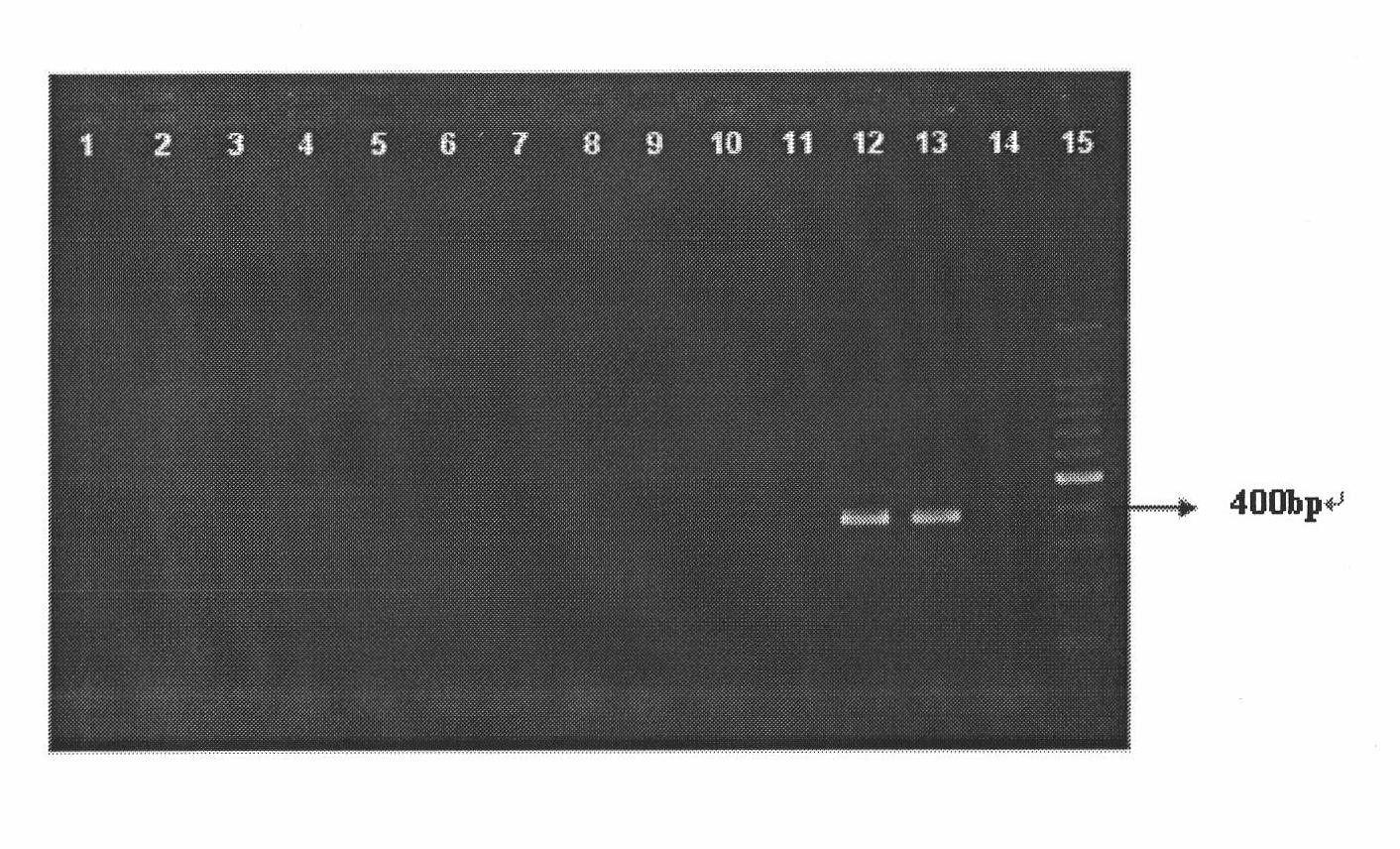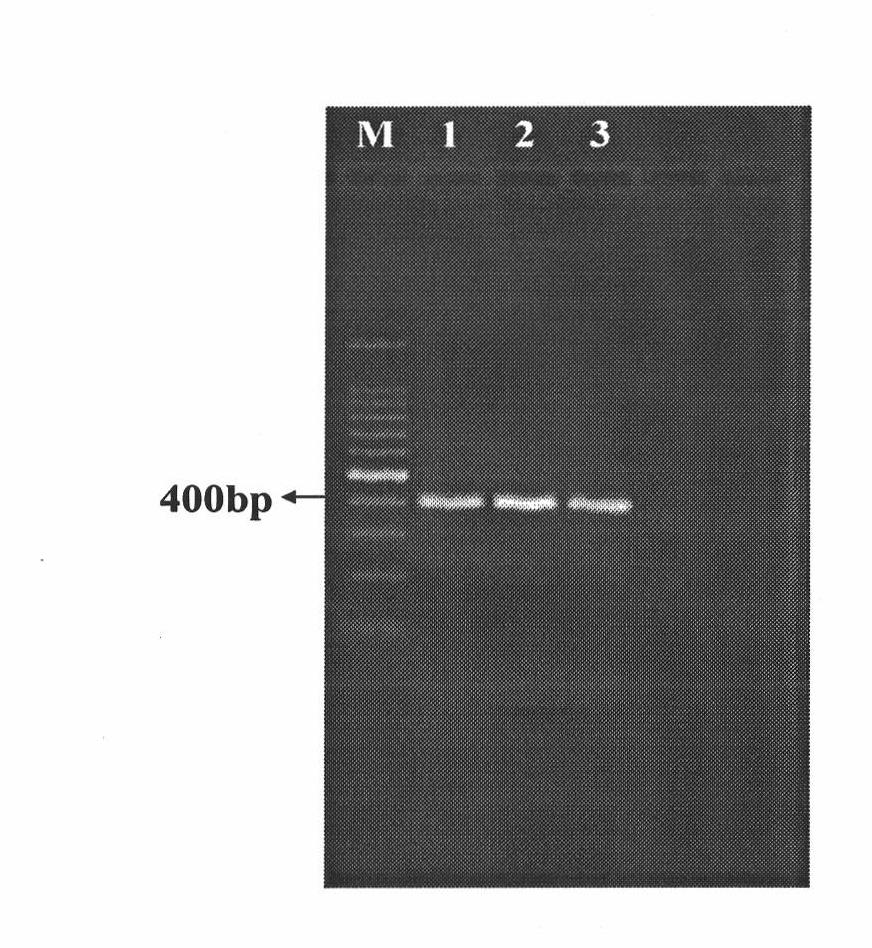Method for rapidly identifying opogona sacchari (entry plant quarantine pest)
A technology for plant quarantine and harmful organisms, which is applied in the biological field and can solve cumbersome problems
- Summary
- Abstract
- Description
- Claims
- Application Information
AI Technical Summary
Problems solved by technology
Method used
Image
Examples
Embodiment Construction
[0113] Taking the organisms on the plants to be inspected that are about to enter the country as samples, the extraction of the sample genomic DNA, the concentration and purity determination of the genomic DNA extract, the PCR reaction system ( The total reaction system is 25 μl, and the components are as follows: 2.5 μl of 10×PCR Buffer, 2 μl of each 2.5 mM dNTP Mixture, 1 μl of each 10 pM sucrose moth-specific primer CF720 / CF1113, 0.13 μl of 5 U / μl Taq DNA polymerase, 50 ng / μl DNA extraction solution 2 μl, sterilized double distilled water 16.37 μl) and the set PCR reaction parameters (pre-denaturation at 94°C for 4 min; denaturation at 94°C for 20 s, annealing at 62°C for 20 s, extension at 72°C for 30 s, a total of 30 cycles; final 72°C Extend for 5 minutes, store at 4°C) for PCR amplification; after the specific amplification is completed, take 10 μl of PCR amplification solution and 2 μl of 6x sample buffer to mix, and the mixture is placed in 1.5% agarose gel at a volta...
PUM
 Login to View More
Login to View More Abstract
Description
Claims
Application Information
 Login to View More
Login to View More - R&D
- Intellectual Property
- Life Sciences
- Materials
- Tech Scout
- Unparalleled Data Quality
- Higher Quality Content
- 60% Fewer Hallucinations
Browse by: Latest US Patents, China's latest patents, Technical Efficacy Thesaurus, Application Domain, Technology Topic, Popular Technical Reports.
© 2025 PatSnap. All rights reserved.Legal|Privacy policy|Modern Slavery Act Transparency Statement|Sitemap|About US| Contact US: help@patsnap.com



